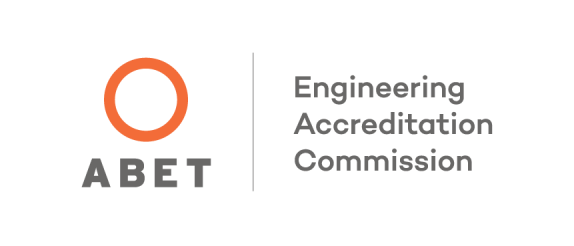The Industrial Engineering Program is accredited by the Engineering Accreditation Commission, http://www.abet.org
What is accreditation?
Accreditation is a non-governmental, peer-review process that assures the quality of the postsecondary education students receive. It is a voluntary process. ABET is responsible for the accreditation of educational programs in applied science, computing, engineering, and technology. The accreditation ensures that a college or university program meets the quality standards established by the profession. For example, an accredited engineering program must meet the quality standards set by the engineering profession. For more information see http://www.abet.org/accreditation/
What is ABET?
ABET is an organization founded originally for up building engineering as a profession. It was established in 1932 as the Engineers’ Council for Professional Development (ECPD). In 1980, ECPD was renamed the Accreditation Board for Engineering and Technology to more accurately describe its emphasis on accreditation. It has been recognized by the Council for Higher Education Accreditation since 1997.
ABET Vision*
ABET will provide world leadership in assuring quality and in stimulating innovation in applied science, computing, engineering, and technology education.
ABET Mission
ABET serves the public through the promotion and advancement of education in applied science, computing, engineering, and technology. ABET will:
- Accredit educational programs.
- Promote quality and innovation in education.
- Consult and assist in the development and advancement of education worldwide in a financially self-sustaining manner.
- Communicate with our constituencies and the public regarding activities and accomplishments.
- Anticipate and prepare for the changing environment and the future needs of constituencies.
- Manage the operations and resources to be effective and fiscally responsible.
ABET Accreditation Criteria
ABET accreditation criteria are intended to assure quality and to foster the systematic pursuit of improvement in the quality of engineering education. It is the responsibility of the institution seeking accreditation to demonstrate clearly that the program meets the criteria.
Criterion 1: Students
The program must evaluate student performance, advise students regarding curricular and career matters, and monitor student’s progress to foster their success in achieving program outcomes, thereby enabling them as graduates to attain program objectives.
Criterion 2: Program Educational Objectives
Program educational objectives are broad statements that describe the career and professional accomplishments that the program is preparing graduates to achieve. Programs must demonstrate that alumni attain the educational objectives. The Industrial Engineering program has defined the following educational objectives:
- Be known as assertive, ethical, and independent critical thinkers.
- Make contributions to their organization based on experience that builds on their IE education.
- Adapt to changing needs in their profession.
- Be recognized as leaders in their organizations.
Criterion 3: Student Outcomes
Student outcomes describe what students are expected to know and be able to do by the time of graduation. These relate to the knowledge, skills, and behaviors that students acquire as they progress through the program. Programs must demonstrate that students attain the program outcomes. ABET has defined the following program outcomes:
- Ability to identify, formulate, and solve complex engineering problems by applying principles of engineering, science, and mathematics.
- Ability to apply engineering design to produce solutions that meet specified needs with consideration of public health, safety, and welfare, as well as global, cultural, social, environmental, and economic factors.
- Ability to communicate effectively with a range of audiences.
- Ability to recognize ethical and professional responsibilities in engineering situations and make informed judgments, which must consider the impact of engineering solutions in global, economic, environmental, and societal contexts.
- Ability to function effectively on a team whose members together provide leadership, create a collaborative and inclusive environment, establish goals, plan tasks, and meet objectives.
- Ability to develop and conduct appropriate experimentation, analyze and interpret data, and use engineering judgment to draw conclusions.
- Ability to acquire and apply new knowledge as needed, using appropriate learning strategies.
Criterion 4: Continuous Improvement
Each program must show evidence of actions to improve the program. These actions should be based on available information, such as results from Criteria 2 and 3 processes.
Criterion 5: Curriculum
Students must be prepared for engineering practice through a curriculum culminating in a major design experience.
Criterion 6: Faculty
The faculty must be of sufficient number and must have the competencies to cover all of the curricular areas of the program. There must be sufficient faculty to accommodate adequate levels of student-faculty interaction, student advising and counseling, university service activities, professional development, and interactions with industrial and professional practitioners, as well as employers of students.
Criterion 7: Facilities
Classrooms, laboratories, and associated equipment must be adequate to safely accomplish the program objectives and provide an atmosphere conducive to learning.
Criterion 8: Support
Institutional support, financial resources, and constructive leadership must be adequate to assure the quality and continuity of the program.
Criterion 9: Program Criteria
The program must demonstrate that graduates have the ability to design, develop, implement, and improve integrated systems that include people, materials, information, equipment and energy. The program must include in-depth instruction to accomplish the integration of systems using appropriate analytical, computational, and experimental practices.
For detailed information see Criteria for Accrediting Engineering Programs

